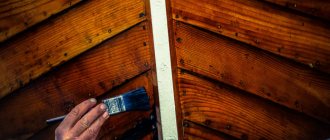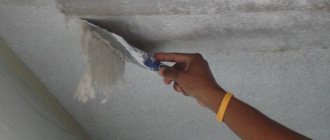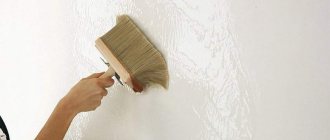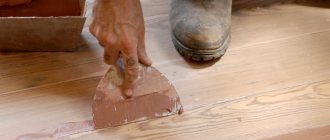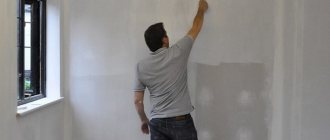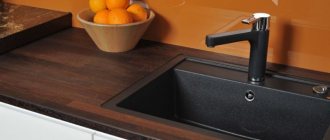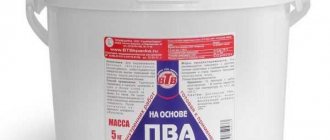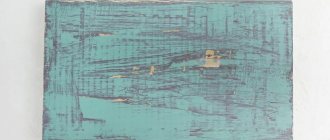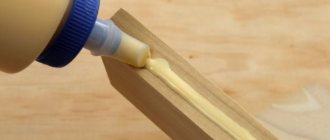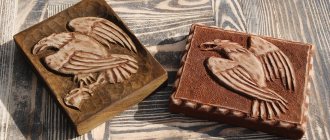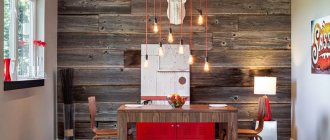Wood is one of the most used materials for building houses and making furniture. Over time, it began to be used even more, and processing methods improved. But before applying the varnish it must be processed. How to prime wood before painting? You can find out about this in this article.
Do you need a primer? Certainly. Priming wood before painting makes finishing simple and economical, and also extends the life of the material.
The tree is exposed to external influences. This may change the appearance or, over time, the material will begin to deteriorate, and it may also negatively affect human health.
The most common of these impacts are:
- Ambient humidity. A wooden structure can become deformed, rot, and mold will begin to appear on it. Cheap wood is especially susceptible to rotting.
- Sun rays. Because of them, the tree becomes dry and its strength may decrease.
- Insects can damage the structure of the tree.
To protect the material from such influences, wood is treated, varnished or painted. But first you need to prime.
Why do you need a primer?
All cracks and pores are filled with the composition. Thanks to this, mold and mildew will not appear in them. In addition, some compounds protect the tree from insects.
However, primer is not only intended for this. Special substances that impregnate the wood can also cope with this. And thanks to priming, the surface of the wood becomes strong and smooth, and not very permeable. Thanks to this, the paint lies evenly and the structure does not absorb it. This allows you to use it sparingly and reduce costs. In addition, the primer penetrates deep into the base of the wooden structure, making it very durable.
In addition to this, the finishing composition adheres better to the structure. It will last longer, not peel or crumble. Primer is more cost-effective than painting because it costs less.
Basic selection criteria, what to focus on when choosing soil
Before choosing a primer, it is important to consider the following points:
- Will the wood be painted in the future or will a clear varnish be applied?
- The work will need to be carried out indoors or outdoors. Several factors are at work here. For the interior, choose quick-drying, low-toxic and odorless mixtures. Then, as for the exterior, any are suitable, the main thing is that they protect the wood as much as possible from the effects of ultraviolet radiation, moisture and temperature changes;
- Also, you need to pay attention to the type of wood. Due to the fact that coniferous types of wood emit more resins, this effect should be minimized. Therefore, it is preferable to choose slag primers in this case.
Any primer is suitable for the exterior, the main thing is that it protects the wood as much as possible from the effects of ultraviolet radiation, moisture and temperature changes.
Wood that is intended for priming
If a wooden structure is located outdoors, it will be subject to temperature changes, attacks by pests, rot, and is also negatively affected by moist air.
List of things that should be primed first:
- window;
- entrance doors;
- fence;
- house siding;
- balcony, veranda or terrace.
If the wood is to be coated with paint or varnish, then a primer becomes mandatory.
What exactly can you prime wood with?
There are several primer solutions for wood before painting.
Alkyd primer
Used if the tree has not been treated. With its help you can get a smooth and even surface, and it is suitable for any finishing work. If you choose a pigment primer, a dense matte film will appear on the surface of the wood. Dries in approximately 12-16 hours. It is not advisable to use it in residential areas due to the presence of organic solvents in it.
Polyurethane primer
Quite expensive. It is used if the wood will be coated with parquet varnish. It is based on polyurethane synthetic resins. It contains a fairly large amount of solvent, and there are no tonic additives.
Silicone acrylic primer
After its application, the moisture content of the wood becomes stable. It will not change when the ambient humidity fluctuates. Naturally, in order to ensure complete protection of the structure from moisture, an acrylic primer should be applied over the entire surface in several layers.
Shellac primer. It is necessary if it is necessary to smooth the surface or remove resin. Suitable for coniferous trees.
Emulsified primer
Can be used for any material, not just wood. It dries quickly (up to 4 hours), it can be diluted with water, it has no unpleasant odor, and it is also safe for humans. Due to so many advantages, this priming method is the most ideal and used.
Epoxy primer. Most often it is paint that is diluted with a solvent. Not a good priming option as there are different recipes and formulations.
Aerosol
It differs from other types of primer in the way it is applied. If in all previous compositions you need to use a roller and a brush to apply paint to the surface of the wood, then here the structure needs to be sprayed. There are advantages and disadvantages to this method. The advantages are that the primer will penetrate well into all crevices and hard-to-reach places, and it also dries quite quickly. The disadvantages are that the aerosol is consumed quite quickly and it is very difficult to determine how many layers of primer have been applied.
Antiseptic primer. It comes in liquid or powder form and is diluted in water. It is used in this way: first, the solution is diluted in a certain amount of water. Then a roller is taken and the primer is applied to the surface. It is necessary to apply several layers so that the solution gets into all the pores and cracks.
putty
There are a large number of compositions for wood putty. It all depends on the type of wood and what it will be covered with. If this is varnishing, then a mixture made with your own hands from PVA glue and wood sawdust is best suited. Homemade putty, after the glue dries, is painted the same color as the wood. It is quite durable and easy to sand.
If the wood is to be painted, then the purchased putty should be applied with a steel spatula in two layers. At the same time, it constantly needs to be dried and polished. Putty paint is quite elastic. If the air humidity is high and the temperature is low, then this type of putty protects the structure from cracks.
Drying oil and enamel
If you need a good penetrating primer, you can use oil paints or alkyd enamels. The best primer for wood that will be coated with oil paint is drying oil. It must be applied in two layers. The second layer is applied only after the first has dried. This may take about a day. It is necessary to dry the surface of the wood on all sides, this will protect the wood from various damages.
In order to protect the wood from moisture, you need to apply hot impregnation with drying oil. There are 2 ways to heat it:
- the drying oil is heated in a water bath and applied hot;
- You can first apply cold drying oil and then heat the surface using a hair dryer.
Alkyd enamel
The structure can be primed with glyphthalic primer GF 021. You must first dilute it using turpentine or white alcohol. In this case, the primer will be able to penetrate to a greater depth and, therefore, will better adhere to the base.
There are a lot of priming solutions. Choose the one that suits you.
By functional features
In addition to the composition, wood primers for interior work or for exterior processing of wooden coverings also differ in functional properties.
Anti-corrosion and antiseptic
Such solutions are used to protect wood from fungal growth or mold. They are often applied to structures located in difficult climatic conditions. If there is no finishing layer, the primer must be renewed after 3 years.
Deep penetration primer
Intended for the purpose of restoring old wooden structures that have a loose structure. With their help, the surface acquires an attractive appearance and receives the required degree of protection from moisture, fungus, mold or rot.
Primer with varnish
Varnishing compounds are characterized by a double effect: they act as a primer and also create a reliable varnish coating. Using such a tool, you can reduce the cost of purchasing finishing materials for a wooden floor.
Product with waterproofing properties
Designed to protect wood from moisture penetration. They are an indispensable impregnation when finishing the façade of a room.
Universal
They are distinguished by their universal purpose and can be used when processing different types of trees. Capable of penetrating deeply into fibers and creating adhesion between layers.
Priming process
Everything is simple here. Anyone can cope with this task. Products are always purchased along with instructions. There you can familiarize yourself with the conditions and methods of application. The most important thing is to prepare the surface of the wood.
The first step is to get rid of traces of paint, dust or stains. It is worth removing unnecessary screws and nails.
If the surface is not smooth enough, the material should be sanded with sandpaper or special tools. If water was used during cleaning, it must be dried.
Now you can take a brush or roller and start priming.
What is a primer composition and its use
A primer is a solution that protects wooden surfaces from negative atmospheric influences, improves their characteristics and prepares them for subsequent finishing. Priming a wooden surface will allow you to:
- achieve uniform application of the finishing coating, eliminate smudges and streaks;
- eliminate existing defects;
- will protect the wooden surface from moisture and pests;
- highlight the natural beauty of the tree;
- extend the service life of the product.
Wood primer is used in cases where:
- it is assumed that wooden products will be used outdoors;
- wood is used for finishing unheated or damp rooms;
- the wooden surface has noticeable defects that require restoration with putty;
- it is necessary to prepare the wood for finishing.
As a rule, manufacturers add components to the primer composition that subsequently form a protective film, as well as ensuring rapid drying, dyes and various additives. There are many special impregnations and therefore it is worth considering what types of primers for wood are available.
Degreasing the wood surface
For this, turpentine or acetone is used. Wet a rag with the solution. If there is too much resin on the tree, then these places are filled with solvent. This procedure should be repeated 4 times.
In order to remove the old coating, universal removers are used. First, they are applied to the paint and covered with polyethylene for half an hour. Then, using a spatula, remove the softened coating.
Average cost of material (RUB)
| City | BELINKA BASE 10 l. | Tikkurila Valtti Expert 9 l. | PINOTEX WOOD PRIMER 3 l. |
| Moscow | 3 850 – 6 090 | 2 400 – 3 040 | 1 960 |
| Kazan | 4 990 | 2 400 – 3 500 | 1 250 |
| Ufa | 5 065 – 5 500 | 2 400 -3 040 | 1 160 |
| Nizhny Novgorod | 4 800 | 4 938 | 1 090 — 1200 |
| Krasnodar | 3 850 | 2 400 – 3 040 | 817 |
The cost of wood primer depends not only on the specific manufacturer, but also on the volume of the container. It is often difficult to determine not only what kind of primer is needed, but also how much impregnation is needed, since different surfaces have different absorbencies. When working with particularly loose wood, you should buy a priming solution to apply 2-3 layers. Typically, the impregnation consumption per m2 is indicated on the container with soil.
Useful tips
Air humidity should be low. This will allow the material to dry faster. The air temperature should be from 5 to 30 degrees above zero. The higher it is, the faster the primer will dry. Therefore, you should do this in the morning or evening.
- The first coat of primer should be thin enough to fill all pores and cracks.
- If the wooden tiles are created by pressing chips, then 4 layers of primer should be applied.
- The quality of material impregnation depends on the number of primer layers.
- To apply a new layer, the old one must be completely dry.
- Soil doesn't have to be expensive.
- The primer must be water-repellent. This applies not only to the painting process. The shelf life of the tree itself and how precipitation will affect it will depend on this. It is worth noting that alkyd primer is not afraid of moisture.
- Time. A high-quality primer always dries quickly and is easy to apply.
Deciding on the color
Painting wooden furniture begins with the design selection process, that is, with the selection of paint. First of all, we decide on the question of how to paint wooden furniture. It depends on the wishes of consumers, taking into account the interior of the room. For example, the surface can be matte or glossy. The paint is selected accordingly.
Furniture items can be painted in a light shade. The use of white is especially fashionable.
Natural wood furniture always emphasizes the structure of the wood. Therefore, you should use varnish. But, besides this, stain is used in parallel with it, and wood impregnation would not be superfluous.
If it is difficult to make a choice, then first remove the old coating. After this, the structure of the material will appear and all defects will be visible. After this, a decision is made to paint the furniture a different color or varnish it.
